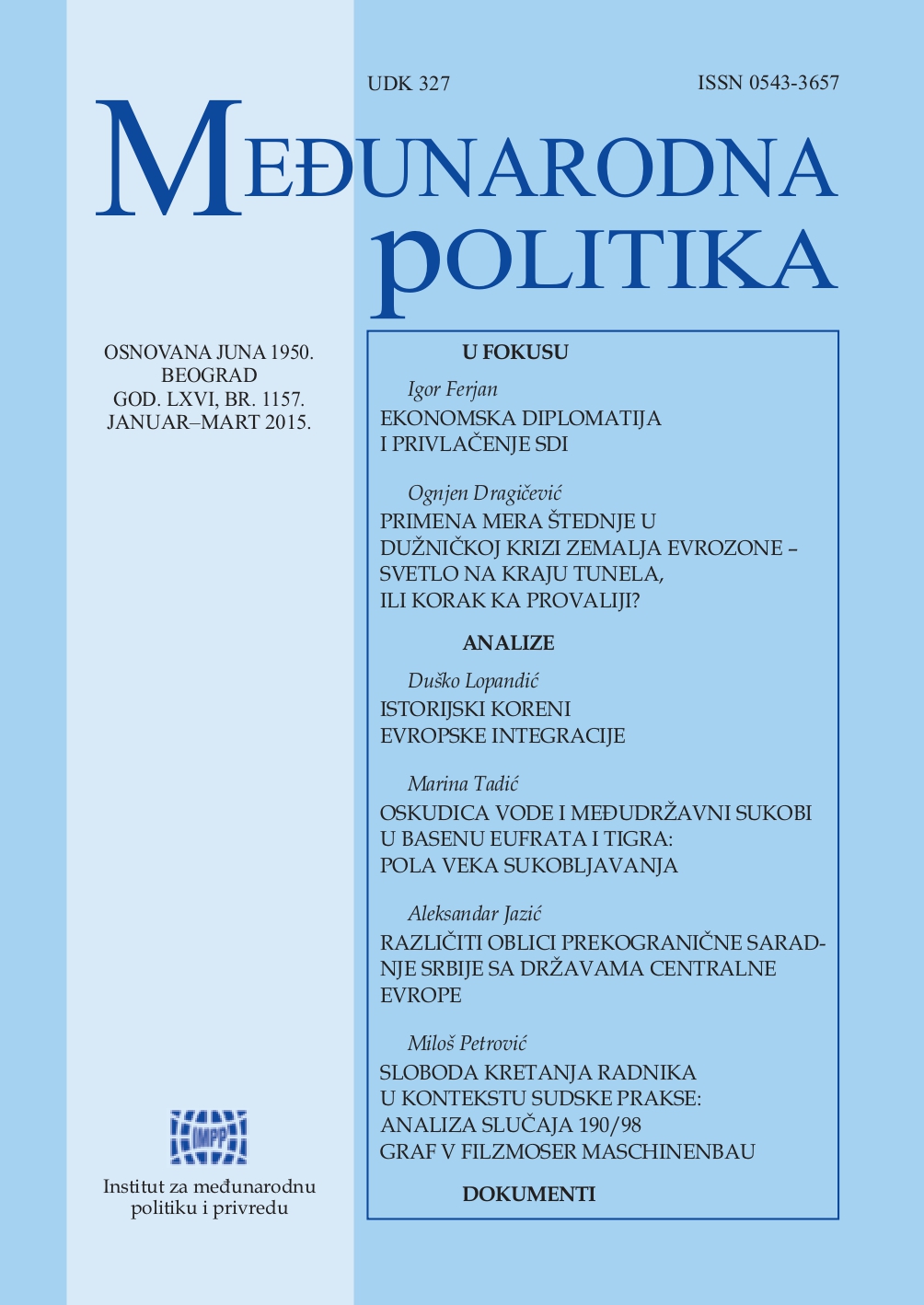Sloboda kretanja radnika u kontekstu sudske prakse: Analiza slučaja 190/98 Graf v Filzmoser Maschinenbau
Free Movement of Workers in the Context of Case-Law: Analysis of the Case 190/98 Graf v Filzmoser Maschinenbau
Author(s): Miloš PetrovićSubject(s): Law, Constitution, Jurisprudence, Civil Law, Human Rights and Humanitarian Law
Published by: Институт за међународну политику и привреду
Keywords: uncertain; indirect; case-law; non-discriminatory limitations; free movement; workers; access; obstacle.
Summary/Abstract: Provisions of Austrian law which entitled a right to a compensation in cases of termination of work relation collided with the principle of free movement of workers, from the standpoint of former Article 39 EC. Could this article „rule out“ the domestic legislation which did not envisage a compensation in the case of termination of employment, by those workers who completed their working contract and departed for taking another job in the same or other EU member-state? Core issue regards the extent of prohibition of non-discriminatory limitations to freedom of movement of workers according to article 45 TFEU, in line with the Bosman ruling. In Graf judgment, Court of Justice analyses the limits to case-law, relying to a significant degree on the enforcement of so-called Keck doctrine in the area of free movement of workers. Opinion of Advocate-General has initiated other questions, such as the market-access aspect, and the general test (Bosman). Concepts of „obstacle“ and „discrimination“ are identified as insufficiently precise, and qualification „too uncertain and indirect“ has not contributed to their closer specification, nor to development of relevant case-law of the Court of Justice.
Journal: Међународнa пoлитика
- Issue Year: 66/2015
- Issue No: 1157
- Page Range: 98-111
- Page Count: 14
- Language: Serbian

